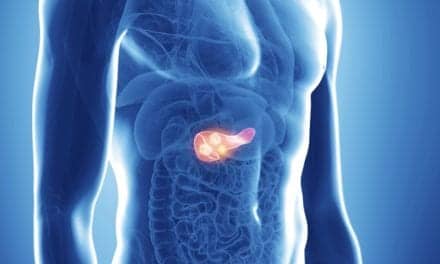Exai Bio combines novel oncRNA technology with artificial intelligence (AI) to develop next-generation liquid biopsy tests that will aid in the detection of cancer by giving clinicians another option beyond traditional tissue biopsies.
By Chris Wolski
When it comes to diagnostic technology, the more options a clinician has the better, particularly for cancer. Exai Bio is developing liquid biopsy tests using non-coding RNA or oncRNA technology and AI to give clinicians a way to assess cancer with a simple blood test.
In a recent interview with CLP, Pat Arensdorf, co-founder and chief executive officer of Exai Bio, discussed how the company’s technology uses next generation sequencing (NGS) and AI, where oncRNA technology fits into the existing diagnostic continuum, and the benefits that oncRNA-based tests will contribute compared to other types of liquid biopsy test.
Arensdorf’s responses have been edited for length and clarity.
CLP: Can you give me an overview of Exai’s oncRNA technology? How does it work?
Pat Arensdorf: Unlike most liquid biopsy approaches — which are based on cell-free and circulating tumor DNA from the cancer genome and focused on mutations, epigenomics, and/or fragmentomics — Exai focuses on RNA and the cancer transcriptome. Exai discovered a novel category of small non-coding RNAs produced by human cancer cells that are abundant in the blood of cancer patients but not healthy individuals, and termed them orphan non-coding RNAs
(oncRNAs). Exai has now catalogued over 250,000 unique oncRNAs across all types of cancer and is continually expanding its datasets. Exai liquid biopsy technology uses NGS to detect thousands of oncRNAs in patient blood. oncRNAs, which unlike DNA, can change as tumor biology evolves, are analyzed with AI to determine whether the oncRNA profile of an individual indicates the presence of cancer and, if so, its type (e.g., breast vs. lung), subtype and stage of disease.
CLP: One of the benefits of the oncRNA technology is that you need far less material than other tests. What advantages does that give the test? Will it help cut costs and improve access?
Arensdorf: The Exai oncRNA technology does not require special collection tubes or prior tissue biopsy material, which will help control costs and simplify clinical implementation. In addition, Exai requires smaller amounts of test material than other tests, meaning smaller serum or plasma volumes. This allows Exai to perform development studies with serum or plasma samples from archived collections, where stored volumes are limited and requests for larger amounts of sample are likely to be declined. By improving access to archived samples, this approach will greatly reduce time and expense needed for Exai to develop and validate new tests.
CLP: Long term, do you see your test as adjunct to traditional tissue biopsies or a replacement?
Arensdorf: There is a role for both liquid and tissue biopsies and they can co-exist. Some testing situations are not supported by tissue biopsy, such as testing for residual disease or serial monitoring. In certain situations, Exai tests may complement the information obtainable by tissue biopsy or make tissue biopsy unnecessary.
CLP: What role does AI play in processing your test?
Arensdorf: AI is used to analyze the thousands of oncRNAs detected in patient blood to determine whether the oncRNAs collectively have a profile indicative of cancer. AI may also determine whether the unique oncRNA profile is indicative of a stage of disease, is specific for a subtype of cancer, or reflects the underlying cancer biology.
CLP: How much earlier will Exai’s oncRNA technology be able to identify a potential cancer compared to a traditional biopsy or other screening test?
Arensdorf: Exai is still developing tests for clinical use. Studies will be needed to determine how much earlier an Exai test detects cancer compared with other screening tests, imaging, or traditional biopsy.
CLP: Your oncRNA technology isn’t approved for market use yet, when do you expect it will be? And where are you in the approval process?
Arensdorf: It’s too soon to talk about this but we’d like the opportunity to share more information with you once it’s available. We’re focused on the science and our goal is to validate our approach and build and validate an AI-based oncRNA liquid biopsy platform.
Chris Wolski is chief editor of CLP.




